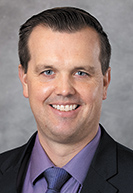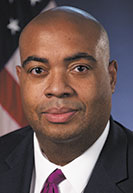Subscriber Benefit
As a subscriber you can listen to articles at work, in the car, or while you work out. Subscribe NowIf you’re wanting to find out how prosecutor’s offices and law enforcement are doing in handling a growing amount of digital evidence, criminal defense attorney John Tompkins figures you could get 92 different answers — one for each of Indiana’s counties.
“That’s only barely exaggerating,” Tompkins said.
Prosecuting and defense attorneys point to two main issues brought on by the onslaught of digital evidence recovered from smartphones, computers and other devices.
First, there’s the sheer amount of data.
On the federal side, for example, the U.S. Department of Justice last year said U.S. attorneys’ offices are storing 10 times the amount of electronic data that they were in 2016.
The second issue concerns storage and sharing.
Tompkins, who’s based in Indianapolis, compared the problem of sharing discovery with the plethora of pandemic-related options that popped up around videoconferencing. Some counties went with WebEx, while others chose Zoom or Teams.
The same idea goes for digital discovery, Tompkins said, where he’s getting links to different apps and programs, and now he needs an account to access each one. And that’s not to say anything about how practical the data might be: Is it well-organized? Is it keyword searchable?
There’s been a learning curve, Tompkins said, adding that he doesn’t think prosecutors are trying to hide things in discovery. For instance, he may get a report, but what he wants is the actual data that went into making the report.
“You just have to know what to ask for,” Tompkins said.
Former prosecutor faces discovery sanction
A case involving a man who was accused of child molesting demonstrates a more extreme example of the challenges presented by massive amounts of digital discovery.
Gregory Whitmore was charged in Hamilton County in 2020 with three counts of Level 1 child molesting, two counts of Level 4 child molesting, five counts of Level 4 sexual misconduct with a minor and one count of Level 5 sexual misconduct with a minor.
The state seized electronic devices, including a phone, from Whitmore, whose counsel made multiple requests for a copy of the state’s full data extraction.
Hamilton Superior Judge William Hughes dismissed the case and sanctioned former Hamilton County Prosecutor Lee Buckingham in December 2022 $105,000 for a discovery sanction pursuant to Indiana Trial Rule 37 for failure to comply with the rules of discovery.
The case, Hughes wrote in the order, was “one of egregious failure” to produce evidence in excess of 10 terabytes for defense counsel to review. The volume was estimated to be the equivalent of 64 million pages of information, Hughes wrote.

The state has appealed the case and argued in an appellant’s brief that Trial Rule 37(B) doesn’t apply to violations of a local rule or a failure to respond to a party’s request. The state is also arguing that the damages awarded “far exceed” the costs caused by the discovery violation.
Whitmore’s attorney at trial, Russ Cate, said he doesn’t believe issues like this are in bad faith.
Many times, the people he’s working with on a case are friends, Cate said. But he added that “you do start to scratch your head a little bit” when an issue that’s repeatedly brought up isn’t addressed.
Cate said he isn’t handling the appeal.

Andre Miksha, former chief deputy prosecutor in Hamilton County under Buckingham, said he gave a presentation in the spring about ways the case should have been handled better, including by being more involved and using his own experience with digital evidence.
Miksha said you can pick whatever analogy you want for that case: a “tangled web,” “a perfect storm,” “a cautionary tale.”
Either way, he said, the case shows the difficulty with digital discovery when dealing with such a large amount of information.
High Tech Crime Units
Miksha is now deputy director of administrative and civil law at the Indiana Prosecuting Attorneys Council, where he also served on the Technology committee while he was a deputy prosecutor.
At IPAC, Miksha helps run a committee of prosecuting attorneys who have a High Tech Crime Unit. The units, launched in 2021, serve as regional hubs with the goal of giving all prosecutors access to state-of-the-art technology to help analyze and process digital evidence.
The crime units are important tools, Miksha said, because of how ubiquitous smartphones and other devices have become in prosecutions — whereas a decade or two ago, looking at digital evidence might have been seen as more niche.
“It’s becoming much more routine and much more important even in routine cases,” he said.
There are 10 crime units across the state, most of which are partnered with an academic institution.
Through the first half of the year, Miksha said the number of cases involved in and devices analyzed through the crime units is on track to outpace 2022 numbers by about 40%. There haven’t been official reports yet, he said, but he expects to have an annual report for 2023.
Amount of info ‘has exploded’

Indiana Southern District U.S. Attorney Zachary Myers said his office isn’t unlike the rest of the digital world. The amount of information the office is taking in “has exploded,” he said.
Using a gun trafficking case as an example, Myers said evidence can now include something like the accused posting a selfie to social media — a relatively light lift in the world of digital evidence that still demonstrates how much things have changed.
“It’s become a real logistical challenge to manage the sheer quantity of information involved in our cases,” Myers said.
The U.S. Attorney’s Office recently announced it will add an e-discovery center to help with taking in data, tracking it, making sure it’s useful for investigators — and producing it for discovery.
Along with the volume of information, Myers said complexity has also increased. That’s partly because he said his office isn’t just working with federal law enforcement such as the FBI or Department of Homeland Security, but also state and local agencies — which means practices and technology can vary.
“You’re just dealing with so many law enforcement agencies,” Myers said.
But the increase in information doesn’t have to be viewed only as a challenge.
Tompkins, the Indianapolis criminal defense attorney, said he’s hopeful the legal community will get better from having more data and said it will be interesting to see how the criminal justice system reacts to having enough information to “test both sides” of the narrative that comes up in a courtroom.
“More information is supposed to lead to better, more trustworthy outcomes,” he said.•
Please enable JavaScript to view this content.

